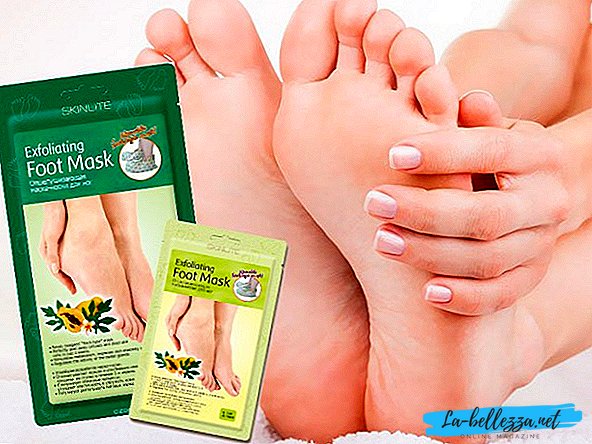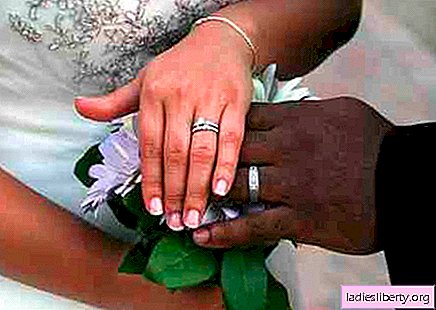
From early spring, summer residents have a lot of worries: watering, weeding and even pests annoy. When the first leaves on the currant bloom, aphid immediately appears. The pest settles on young shoots that are deformed and dry out. Currant yield is declining. What to do and how to deal with aphids on currants?
How to detect aphids on currants
Most often on the currant gall aphid settles - a small sucking insect. It feeds on aphids by young shoots and currant leaves. A pest colony can be found on the bottom of a currant leaf. Red or yellow swellings form on the damaged leaves, tubercles - galls.
Aphids parasitize during the season, the pest hibernates under the bark of annual shoots. The female lays eggs closer to the kidneys. In spring, when the weather is warm, the larvae go outside and feed on young leaves.
Around mid-July, when currant leaves cease to grow, aphids have wings. At this point, the pest leaves the bush. If there are a lot of weeds around the plantings, the gall aphid will move to them, where it will feed until the fall. During the season, more than one generation of pests is introduced, which in the autumn, around September, migrate back to the currant bush. Females begin to lay eggs.
Gall aphids on currant bushes are a great danger, especially for young plants. Immature bushes affected by a large number of pests are unable to develop normally. The productivity of adult bushes drops sharply, the berry grows smaller.

How to deal with aphids on currant bushes
One of the important factors in the fight against gall aphids on currants is prevention. From early spring, it is necessary to carry out the main preventive measures:
• be sure to remove all weeds under the bushes;
• carry out sanitary pruning of the bush, cutting all diseased branches;
• attract beneficial insects that feed on gall aphids, such as ladybugs;
• carry out spring scalding of the bush with boiling water.
Important! If ladybugs and lacewing settled on the currant bushes, then insecticides must be used carefully. It is better to replace them with herbal infusions. Useful insects will help get rid of aphids quickly.
By attracting beneficial insects to the garden, you can get rid of gall aphids without resorting to chemicals. To attract insects, experienced gardeners practice planting medicinal plants under currant bushes:
• Marigolds;
• Allisum;
• Yarrow;
• Tansy.
Many insects that are useful for the garden prefer to live in dill or buckwheat plantings.
How to get rid of aphids on currant bushes: garden fumigation
Very often, one way to combat aphids is to fumigate the garden. Experienced gardeners practice fumigation with rubber, tobacco and mushroom.
Fumigation should be carried out before the buds open, at the time of their opening.
• Fumigation with rubber is carried out as follows: put a bush of rubber in an old pan and put smoldering under each bush of currant.
• Tobacco and mushroom fumigation with a rain cover is carried out using a beekeeper's smoker.
You need to smoke a garden for at least three hours. You need to do this in the evening, in calm weather. Aphids die completely, the use of chemicals is not necessary.
The disadvantage of this method is caustic smoke, which adversely affects human health.
Currant aphid control: chemical treatment of bushes
The chemicals that need to be used in several stages will help get rid of gall aphid colonies on currants. Use chemical preparations only in advanced cases and mass attacks of pests.
1. The first spraying of currants is carried out in the spring, at the time of budding.
2. The second time you need to carry out the processing when the flowering shrub.
3. Spraying currants a third time is better immediately after flowering.
4. The last processing should be carried out only after a full harvest.
How to treat currants from gall aphids?
For treatments using chemicals that are dissolved in water. Such drugs have proven themselves well:
• Actellic (dilute 15 ml per 10 liters of water);
• Novaktion (dilute 5 ml per 10 liters of water).
Many summer residents recommend resorting to folk remedies during the second and third sprayings, without using chemicals.
Folk remedies for the fight against aphids on currants
Using folk remedies in the fight against aphids, you can get rid of the pest without interfering with beneficial insects. For these purposes, use the following infusions:
• Tobacco infusion;
• Infusion of marigolds;
• Infusion of red hot pepper;
• Infusion of tomato tops;
• Infusion of onions and garlic;
• Ash infusion with wormwood;
• A solution of soda ash;
• Infusion of celandine.
1. Tobacco infusion
An infusion is prepared from tobacco dust or shag, with the addition of laundry soap and water. For this, 500 g of tobacco dust is poured with 10 liters of water and the mixture is insisted for several days. Filter the finished infusion, dilute with 10 liters of water and add 100 g of grated laundry soap as an adhesive.
Spraying is carried out in the evening, in clear weather. After the rain, repeat the treatment.
2. Infusion of marigolds
It is very effective in combating gall aphids infusion of marigold, which is prepared from dried flowers. For a 10 liter bucket, take ½ of the crushed marigolds, which are poured with warm water. Insist mixture for three days. The finished solution is decanted and 50 g of grated laundry soap is added.
3. Infusion of red hot pepper
You can prepare a concentrated infusion of red capsicum. To do this, 1 kg of fresh pepper must be cut and put into a pan, pour 10 liters of cold water. Boil the mixture and simmer for 1 hour. The cooled solution is removed in a warm place for several days. The finished solution is filtered and stored in the cold.
For spraying, a working solution is prepared from the concentrate. For 10 liters of water use 1 cup of concentrate. You can add grated laundry soap to the solution as an adhesive.
Important! Ready working solution and red hot pepper are used not only in the fight against aphids. It is good to use against slugs.
4. Infusion of tomato tops
From tomato tops, a good infusion is obtained to combat gall aphids on currants. To do this, dry tomato tops, about 2 kg, and fresh 4 kg tops are chopped, pouring with 10 liters of water. The mixture is boiled for 30 minutes. The resulting concentrate is cooled and stored in the cold. Before spraying, a working solution is prepared. For this, the concentrate is diluted with water in a ratio of 1: 5, adding grated laundry soap.
Important! A working solution of tomato concentrate concentrate can be used to control mites, scoops, moths, cruciferous flea and gooseberry sawfly.
5. Onion and garlic infusion
Experienced gardeners advise spraying currants with the infusion of green onion feathers. To do this, 1 kg of chopped green onion is poured with 10 liters of water, the mixture is insisted for 6 hours. Strain the finished solution and spray.
You can use pre-prepared onion peel. For this, 500 gr. husks insist in 10 liters of water for about 5 days.
Well-proven infusion of garlic. For its preparation, 0.5 kg of chopped garlic is poured with 5 liters of water. Insist the mixture during the day. Ready infusion is used as directed.
Important! Infusions of onions and garlic not only fight pests on currants, but also increase the immunity of plants.
6. Ash infusion with wormwood
Affected currant bushes are treated from aphids with ash solution with the addition of wormwood. To do this, 500 grams of chopped wormwood is poured with water, about 5 liters, adding 1 cup of ash and 50 grams of laundry soap. The mixture is insisted for about 5 hours. Spraying is carried out with a working solution, which is prepared from 1 part infusion and 2 parts water.
7. Soda ash solution
You can treat currants against aphids with a soda solution. Prepare a working solution of 1 tbsp. l soda ash and 1 liter of water.
Spraying with such a solution will help to get rid not only of the aphids, but also drive the fungus from the bush.
8. Infusion of celandine
Summer residents are fighting aphids with the help of celandine infusion. A solution of 4 kg of fresh celandine grass is prepared, which is ground and poured with 10 liters of water. Infuse the solution for a day. The finished solution is sprayed with currant bushes.
Important! During processing of planting currants with celandine solution, it is necessary to use individual protection, since celandine juice is very toxic.
What to consider when processing currants from gall aphids
• Young shoots of currant are well bent, they can be dipped in any remedy prepared according to recipes and washed well, without risk of breaking a branch.
• Spray and wash each branch without missing a single section of the bush.
• It is necessary to spray not only shrubs, but also the soil under it.
• The weather during processing should be calm. When using chemicals, watch out for bees. It is important not to poison the beneficial insects, which are very necessary in the garden. It is better to transfer the spraying to the evening when the bees no longer fly.
• When spraying, be sure to moisten the bottom of the sheet, for this the sprayer is directed inside the bush.
• You should not have high hopes for folk methods of combating aphids on currants if time is lost and the pest has chosen roses, plums and gooseberries. In such a situation, chemicals cannot be dispensed with.
In the fight against aphids on currants, it is important to monitor the cleanliness of the site, to prevent riotous weeds and the proximity of shrubs to anthills. More often carry out preventive spraying with infusions of herbs, monitor the density of the bush and cut diseased branches in time.











